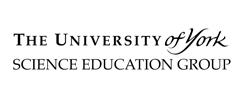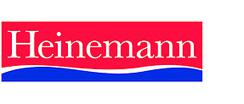- View more resources from this publisher
 University of York Science Education Group (UYSEG)
University of York Science Education Group (UYSEG)
Salters' Science: Year 10 Modules
The Salters’ double award science course included 12 modules for Year Ten. Each module relates to materials, phenomena or ideas which would be familiar to students or of value in their everyday lives. These starting points illustrate scientific principles in action, creating an applications-led course of study. By capturing class-room best practice, the course included many types of teaching and learning activities, making the materials a rich source of ideas for interesting and varied lessons.
The Atmosphere: [Earth science/physics] considers the science of the atmosphere and how this relates to weather systems in different parts of the World. The module covers the behaviour of gases and some environmental concerns about the atmosphere.
Balancing Acts: [mainly biology] looks at natural and artificial ecosystems and the balance within them. This module also examines the way in which environmental changes may affect particular ecosystems.
Communicating Information: [mainly physics] Different aspects of communication, the impact of technological developments such as satellites and fibre optics on communication systems and the importance of the electromagnetic spectrum.
Construction Materials: [mainly chemistry] The structure and properties of materials such as glass, timber, metals and plastics which are used in the construction industry.
Electricity in the Home: [mainly physics] The importance of electricity and its safe use in the home. This module covers wiring of circuits, electrical power, loading and overloading of circuits and portable sources of electricity.
Energy Matters: [mainly physics] Energy use in the home and the energy demands of modern life-styles. The cost of energy, its efficient use and ways of reducing energy consumption.
Food for Thought: [biology/chemistry] The role played by science in helping to produce sufficient food. A comparison of intensive and organic farming, food preservation and processing.
Keeping Healthy: [mainly biology] Different types of illness, and the body’s defences against attack. Advances in medical knowledge and the prevention of illness.
Mining and Minerals: [chemistry/earth science] Location, extraction and processing of minerals and the impact on the environment. Methods used to extract metals from their ores.
Moving On: [mainly physics] The forces involved in cycling and in moving vehicles introduce ideas about force, motion, acceleration and pressure. Safety features such as crumple zones, crash helmets and safety belts are considered.
Restless Earth: [Earth science] Factors which contribute to the formation of surface features on the Earth, including earthquakes and volcanoes. A study of the distribution of these features leads to ideas about plate tectonics as an explanation of the processes involved.
Transporting Chemicals: [mainly chemistry] Study of the hazards associated with moving dangerous cargo leads to a system of grouping and classifying chemicals.
Resources
Filter
Energy Matters
A Year Ten module from the Salters’ double award science course. The module begins by looking at the large variety of labour-saving devices now available and their impact on life-styles. Students work with a range of common electrical devices to investigate the relative...
Food for thought: food supplies
A Year Ten module from the Salters’ double award science course. A text activity on world food supplies introduces a series of experiments on photosynthesis and the role of chlorophyll. Experiments on the effects of nutrient deficiency leads to consideration of the use...
Keeping Healthy
A Year Ten module from the Salters’ double award science course. Practical tests using “urine” samples illustrate chemical diagnostic testing for illness. Different types of illness are classified, also different types of micro-organisms and the body’s defences against them. Experiments show how bacteria grow and...
Mining and Minerals
A Year Ten module from the Salters’ double award science course. The module begins with a survey of minerals world wide and their constituent elements. This provides opportunities for practice with symbols, formulae and equations. A practical simulation of geological...






